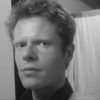Prior to 2003, you'd have been forgiven for scratching your head had someone asked if you'd heard the singer, songwriter and pianist John Howard. His sole album (at that point), Kid in a Big World (CBS, 1975), had been unjustly overlooked and a similar fate greeted the series of singles issued in its wake. But thirty years later, when RPM, a division of Cherry Red - a remastering and reissues powerhouse - brought the album back to the marketplace, the timing was right. The music monthlies and colour supplements got on board, reappraising the album very favourably and, after toiling in other areas of the music industry, John was back in business as a performing songwriter and recording artist. Since then, a further twelve albums have appeared, and the next one, Hello, My Name Is, arrives later this month. John, whose exuberant and theatrical style is sometimes thought to bridge the gaps between glam, Broadway and singer/songwriter, plays the Servant Jazz Quarters in London on November 26.
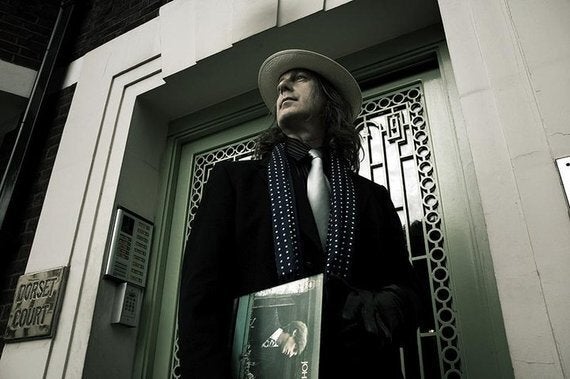
John Howard, Baker Street, London
Photography: Brian David Stevens
John discovered that his first album had an incipient following in 2002 when a journalist, Mark Luffman, emailed him from Australia after finding the LP in a car-boot sale. "He raved about it. No one had ever said such nice things," says John. "It was considered a complete failure by my record company and management - they saw it as an experience best forgotten". This was far from an isolated incident. The following year, the front cover of Kid, which captured John peering enigmatically through a window in an abandoned building, was featured as a 'classic album sleeve' in an illustrated book sold prominently in the Tate Modern. "And then I started becoming aware of blogs being written about the album - 'who was John Howard?', 'Is he still alive?'" It was only a matter of time before the album was reissued, a process made easier by the fact that John, rather than CBS (by then, Sony), was its legal owner. Among the albums that followed were the two follow-ups to Kid in a Big World, Technicolour Biography and Can You Hear Me OK?, both of which had been spiked by CBS. "The record company's initial excitement about my potential to be a star was waning with each flop, and by 1976 I was without a record deal and all but washed up at 23!"
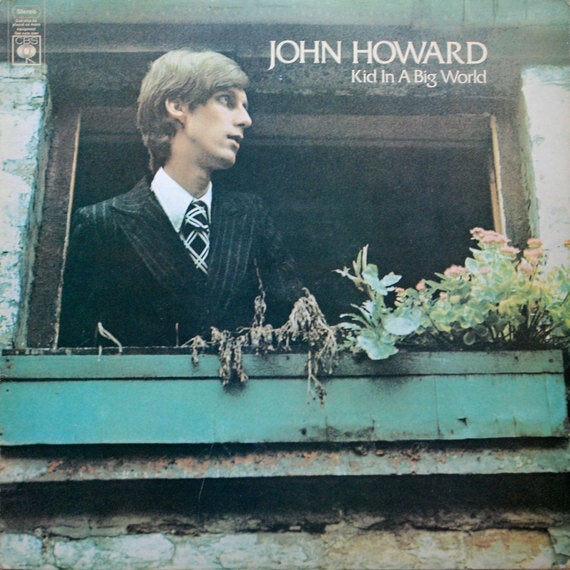
Kid in a Big World, John's belatedly celebrated debut, 1975
Photography: Mike Nicholson
It hadn't helped that BBC radio was hostile from the start, refusing to play his first single, "Goodbye Suzie" or the next, "Family Man". Decades later, John would learn that the ostensible reasons ('too depressing' and 'anti-women', respectively) were in fact pretexts and that it was his sexuality which had consigned him to the blacklist. Although he hadn't been promoted in a blaze of gayness like the ill-fated Jobriath, John's sexuality was something he'd been calmly open about for some time. But in the mid-seventies it was only acceptable to be coy, like Peter Allen and Elton John, or to exploit homosexuality while being resolutely straight, like David Bowie and Marc Bolan. In the face of these disappointments, John was impressively stoical. "The rot had started to set in with the two flop singles and after that there was a sense of desperation around me which pervaded the offices of my management and CBS. I expected to be dropped, so when it happened I just shrugged my shoulders". In no time, he had live work at two of London's most famous hot-spots - April Ashley's in Knightsbridge and Morton's in Berkeley Square. "I did that for a year, rather successfully in fact. No one had a clue about my former life as a budding pop star, and I enjoyed the whole well-dressed busyness of it".
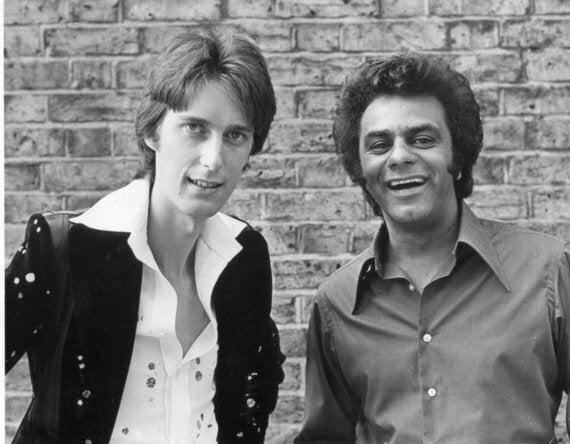
With Johnny Mathis outside Broadcasting House, after filming segments for The Musical Time Machine, 1975
Photography: Tom Sheehan
A broken back kept him out of action in 1976, but soon John acquired a short-lived, singles-only record contract. Then he relocated to the other side of the industry, eventually becoming Head of Strategic Marketing at MCA/Universal. "For the first time in my life I was being paid a good salary, got to travel first class and stay in fabulous hotels all around the world. Doing presentations to rooms full of people fulfilled my performance need and at no time during those years did I ever really miss being a recording artist. That career seemed like a gone time to me, never to return. It shows how wrong you can be." Wrong indeed, because since being rediscovered by a growing cult of record buyers and concert-goers, John has made an album a year, gradually honing a different approach to recording whereby he plays and sings everything himself, as well as assuming the role of producer. He overdubs his own, un-aged voice to create lovely choral effects and his songwriting continues to penetrate the human condition and find insights and answers.
The imminent Hello, My Name Is is a collection whose songs are loosely linked. "The recurring theme is identity - how we see ourselves, how others see us, how we'd like to be seen and then the extension of that, how some of us don various personas with different people, believing certain factors in our characters would please or impress some people. So we enhance those when in their company and hide those we think may upset them or put them off." It's a concept likely to strike a chord with many - after all, most of us start to split our identities in childhood when we discover that the rude joke which went down so well in the playground doesn't amuse grandmother. And John, perhaps more than most, has a keen understanding of the mixture of artifice and authenticity that makes up an identity. He's played out some of his own in front of the camera, coming to London in the early seventies with long hair and student apparel before morphing into a Biba-sporting glam God in full makeup. Today, the fetching long hair is back, coupled with an outgoing air that's both hip and avuncular. Expounding on the theme, John says, "I think the only time we're ever truly ourselves is in the early hours of the morning when we're lying awake and going over our lives; the things that have happened to us years before or recently, trying to make sense of it, trying to work out if we did wrong or could have done better. That's probably the nearest we come to being a child again, though now we're burdened by doubts and worries." One worry that can be crisply discarded is whether or not John can cut it live. Although he now lives in Spain with his long-term partner, Neil, he played in London last year, and the results were recorded for an excellent in-concert set.
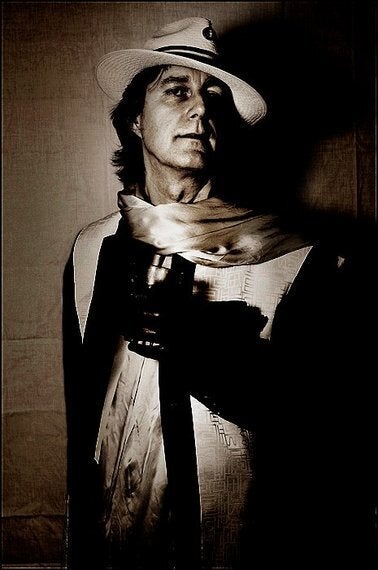
At Glam-Ou-Rama, London, 2005
Photography: Brian David Stevens
"I'm enjoying it this time round," he confides. "I didn't really enjoy it in the 70s. I'd be dressed and made-up for photoshoots and concerts, record at places like Abbey Road and Apple, be wined and dined and told how fabulous I was, and then go back to my tiny bedsit, flat broke, wondering if the next single would sell and fearing it wouldn't. None of it ever felt quite real. Now, I love writing, recording and performing. This time it is fun. I'm making albums I'm proud of, which sound exactly as I hear them in my head, I'm in control of how and when they're made and released, how they look and sound, and can make my own decisions at my leisure. I'm also 61, so have no expectations or ambitions for a future career. It is what it is now and I love it. When I no longer love it, I'll stop. I'm very lucky to have been given a second chance".
Read the complete interview here. John Howard performs at The Servant Jazz Quarters, London on 26th November - more details here. Visit John's website here.
